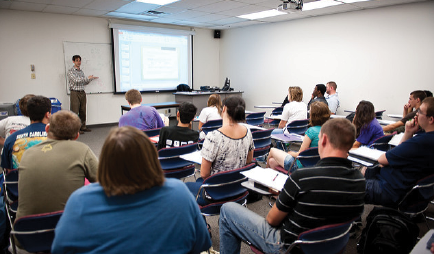Jaharia Stoute
Contributing Writer
A huge change has taken over classrooms. It’s everywhere, it’s unavoidable and it’s the best thing that has ever happened for students… or is it?
If by now you can’t see the impact that technology has had, you are clearly not using your eye- phone.
Shannon Cavanaugh, an education student from ESU and a current substitute in Wallenpaupack School District said that technology plays a huge role in the change.
“Today, every student has an iPhone,” Cavanaugh said. “It’s also leery because students take pictures of teachers or other students and they can even use them in a bullying situation.
Although we try to enforce a no phone policy, you will still always have students that are going to use them regardless.”
Technology is such a controversial matter, because although one may argue that it is beneficial and more convenient to the students, others may say that it is more of a distraction.

Cavanaugh stated that she loves how students have software programs, like D2L, where they can login and turn in papers. They also have the option to email questions to their teachers at any time instead of having to wait until their next class.
Even elementary schools, like Chipperfield Elementary, make the best use of technology, with apps such as ClassDojo. This app allows teachers of small children to communicate the daily progress of students with parents.
Other schools use Chromebooks instead of textbooks to teach their students. Without it, we wouldn’t have computer labs, or be able to give a PowerPoint presentation or download Smart books
Let’s face it, changes in technology is pretty good! But is it an advantage or disadvantage in our students’ education?
“Everyone had cell phones but there was no Instagram and Snapchat,” Cavanaugh said. “iPhones were just coming out, but we were not so distracted.
Now every student has an iPhone out, checking their Facebook.”
Most teachers, especially older generation, do not want students to use their phones in class, and they may have a point. However, as much as the schools try to enforce a “no phone policy” there will always be students that have them out.
So how does one keep students engaged, if they are more focused on the phone than of the classroom? Cavanaugh combines the two by welcoming the use of technology in her classes
She often asking students to take out their phones or laptops and Google something, instead of turning to a certain page in their textbook. As she said this, I thought it was a brilliant approach.
If they are going to have them out anyway, they might as well be encouraged to use them productively. Some teachers may still use chalkboards, but one day those chalkboards will become extinct, desktop computers will be antiques and iPhones will be vintage.
The future will always continue to advance technologically, and tomorrow’s teachers will still agree that this is the biggest change in student’s education.
But is this a positive or negative – there really isn’t a right answer.
The only thing we know is what Bob Dylan said best,
“The Times They Are A-Changin.”
Email Jaharia at:
jstoute@esu.esu

